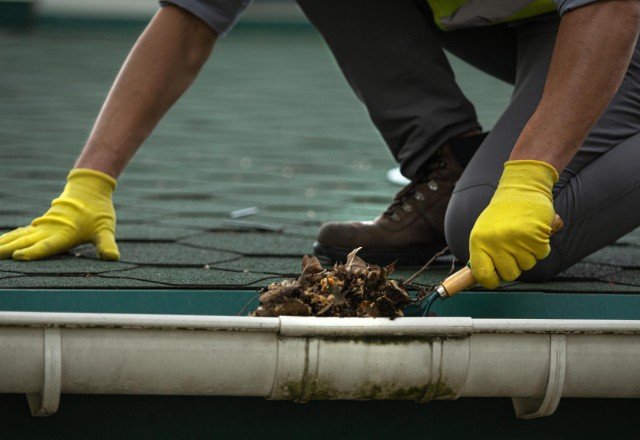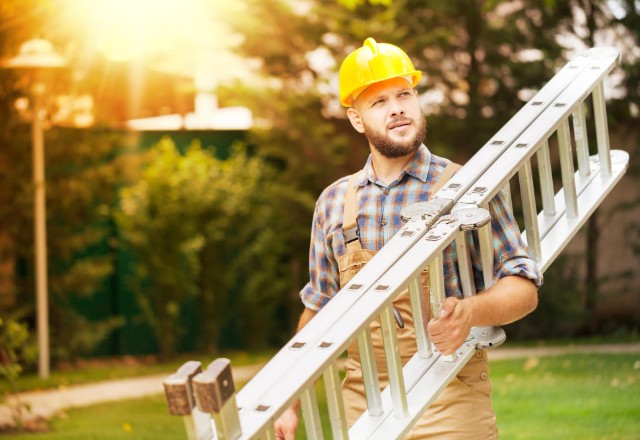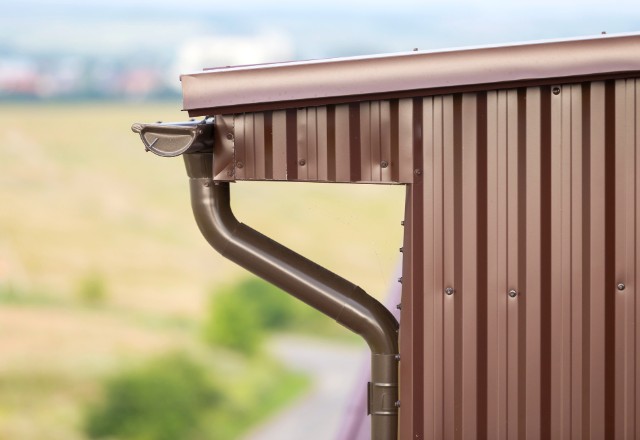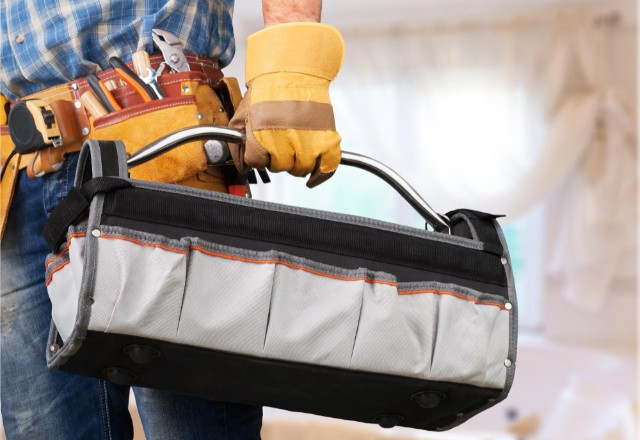Roof and gutter repair are important tasks that homeowners need to care about in order to maintain the exterior of their homes. The roof is an essential component that protects the home from weather elements, while the gutters are responsible for collecting and channeling the rainwater away from the house’s foundation. Failure to maintain both the roof and gutters can lead to water damage, leaks, and costly repairs. By paying attention to these home maintenance tasks and following some tips and tricks, homeowners can avoid major repairs and ensure a functional and attractive exterior.
Disclaimer: The information contained in this article is intended to provide general guidance on roof and gutter maintenance. While we strive for accuracy, please note that the content of this article is not a substitute for professional advice. If you require more specific assistance, please contact Advance Roofing LLC at https://advanceroofingllc.com/. With years of experience providing the highest standard of quality roofing solutions in the Spokane, WA area, our team of experts are always happy to help.
Benefits of Regular Maintenance

Regular maintenance of your home’s exterior, including roof and gutter repair, is essential to ensure that your property remains in good condition for years to come. This type of upkeep not only helps to prevent water damage, but it also extends the lifespan of your home’s exterior. By making regular maintenance a priority, you can save money in the long run by avoiding costly repairs.
- One of the primary benefits of regular maintenance is the prevention of water damage. Water damage can occur when gutters become clogged with debris, preventing water from flowing freely through the system. When this happens, water can overflow and seep into the walls and foundation of your home, causing damage that can be expensive to repair. By regularly cleaning and checking on your gutters, you can prevent clogs and ensure that water is flowing away from your home as intended.
- Regular maintenance also allows you to identify potential problems before they turn into major repairs. For example, if you notice a loose gutter hanger or a small leak in your roof, you can fix the issue before it becomes more significant and costly. This type of proactive approach can save you time and money down the line.
- In addition to preventing water damage and identifying potential problems, regular maintenance can improve the curb appeal of your home. A well-maintained exterior can make your property look more attractive and increase its market value. By investing in regular maintenance, you’ll be able to enjoy a beautiful, pristine home that will stand the test of time.
Don’t wait until it’s too late – start making regular maintenance a part of your home care routine today!
Preparation for Repairs

Before beginning any repairs on your roof or gutter system, it’s important to properly prepare for the task at hand. Preparation can help ensure that the repairs are completed quickly and effectively, while minimizing the risk of injury or damage to your property. In this section, we’ll cover the essential steps you should take to prepare for any roof or gutter repairs.
Identifying Problems
Whether you are a new homeowner or have lived in your home for years, it is important to keep an eye on the condition of your roof and gutter system. These two components work together to protect your home from water damage caused by severe weather conditions. However, over time, various problems may arise that require maintenance or repairs.
- One common issue that homeowners face is leaks. Leaks can occur due to damage caused by severe weather conditions such as strong winds, heavy rain, or snow buildup. If left unaddressed, these leaks can cause costly repairs or even water damage to your home’s interior.
- Another problem that may arise is clogs. Debris such as leaves, pine needles, or twigs can accumulate in your gutters and downspouts over time. When this happens, the water cannot flow freely, causing the gutters to overflow and potentially cause damage to your home’s roof and foundation.
If you ignore these problems, you may end up having to pay thousands of dollars for major repairs. Therefore, it is essential to identify the warning signs and take action before it is too late.
Some signs that indicate the need for repair include visible damage to the gutter or downspout system, water stains on the ceiling or walls, or missing shingles on the roof. If you notice any of these warning signs, it is crucial to address the problem as soon as possible to prevent costly repairs or water damage to your home’s interior.
Establishing a Budget for Your Roof and Gutter Repair: Tips and Tricks

As a homeowner, it is essential to address any issues with your roof and gutters promptly. However, it is just as important to establish a budget for the repairs before you start the work. Budgeting for repairs can help you avoid overspending and ensure that you have allocated enough funds to restore your roof and gutters effectively.
Several factors can affect the cost of your roof and gutter repair project. The extent of the damage, materials required for the repair, size of the repair project, and labor costs are all crucial factors to consider when establishing a budget.
For example, if the damage to your roof or gutters is extensive, you may need to replace entire sections, which can be more costly than a minor repair project. Similarly, the type of materials used for the repair, such as aluminum or copper gutters, can also affect the overall cost. Additionally, installing seamless gutters or water flow systems can be more expensive than traditional gutter systems.
To help you establish a realistic budget, it’s crucial to research the average costs associated with common repair projects. Replacing damaged sections of gutters may cost between $200 and $500, while fixing leaks in the roof may cost around $350 to $1,200, depending on the extent of the damage. Installing seamless gutters can cost between $1,000 and $2,500, depending on your home’s size and the quality of the materials used. Water flow systems can cost between $1,500 and $5,000, depending on the complexity of the setup, making it important to establish a budget before starting the project.
Selecting the Right Materials for Repairs

When it comes to roof and gutter repair, choosing the right materials can make all the difference. Your choice of materials should be based on several factors, including cost effectiveness, longevity, and weather conditions in your area.
- One of the most commonly used materials for gutters is aluminum due to its cost-effectiveness and durability. They are lightweight, easy to install, and can last up to 20 years with proper maintenance. Vinyl gutters are also cost-effective and easy to install, making them an ideal choice for DIY projects. However, they may not be as long-lasting as other materials and may crack in extreme weather conditions.
- Copper and stainless steel gutters are considered high-end materials due to their durability and longevity. These materials are corrosion resistant and can last up to 50 years with proper maintenance. They also provide an attractive aesthetic to your home’s exterior. However, they come with a higher price tag than aluminum or vinyl gutters.
- Zinc gutters are another option that may provide a unique aesthetic to your home’s exterior. They have a distinctive bluish-gray patina that can complement certain styles of homes. While they are not as commonly used as other materials, they are durable and long-lasting.
When selecting the right gutter materials, it’s also crucial to consider the appropriate size of gutters and downspouts. Larger gutters and downspouts are necessary for areas with heavy rainfall to prevent water damage to your home’s foundation.
Repair Process
Regular maintenance of your roof and gutters can help prevent major repairs and costly water damage to your home’s exterior. However, despite your best efforts, repairs may still be necessary from time to time. Here are some tips and tricks for the repair process of your roof and gutters that can help you save time and money in the long run.
Fixing Leaky Gutters and Roofs

Keeping your home’s exterior in good condition is important for both curb appeal and preventing costly water damage. One common issue that homeowners face is leaky gutters and roofs, which can be caused by clogged gutters or damaged roofing materials. Here are some tips and tricks for fixing these issues:
Identify the Source of the Leak
The first step to fixing a leak in your gutters or roof is to identify the source of the problem. This may involve inspecting your gutters and roof for signs of damage or water damage such as discolored walls or ceilings, mold, and mildew.
Clean Out Gutters
If your gutters are clogged with debris, such as pine needles or leaves, removing this debris can often solve the problem. Use a garden hose to flush out your gutters, and consider installing gutter guards to prevent clogs in the future.
Seal Gutter Joints and Seams
If your gutter joints or seams are leaking, use a putty knife to apply sealant and reattach any loose gutter hangers to help prevent leaks.
Repair Roof Leaks
To repair roof leaks, start by removing any damaged shingles or tiles. Replace them with new ones, making sure to properly seal each replacement. Use roofing cement to fill in any visible cracks or holes in your roof.
Install Gutter Guards
To prevent future clogs and water damage, consider adding gutter guards to your gutters. These can help prevent debris from accumulating and causing costly damage.
By following these tips, you can protect your home’s exterior and prevent water damage caused by leaky gutters and roofs. If you’re uncomfortable working on your gutters or roof, consider hiring a professional gutter cleaning or roof repair service.
Installing Seamless Gutters and Water Flow Systems

Seamless gutters are becoming increasingly popular due to their custom fit, durability, and low maintenance requirements. If you’re considering installing seamless gutters and water flow systems in your home, here are the steps you need to follow:
- Measure and Determine Materials: First, measure the dimensions of your roof to determine the length and number of gutters required. Next, choose the appropriate materials for the job, such as aluminum or copper, which are popular choices due to their resistance to rust and corrosion.
- Custom Make the Gutters: Unlike traditional gutters, seamless gutters are custom made on-site to fit the exact dimensions of your roof. A professional installer will use a machine to form the gutters from a continuous coil of material, ensuring a perfect fit for your home.
- Install the Gutters: Once the gutters are custom made, it’s time to install them on your home. The installer will attach the gutters to the fascia board using strong hangers, ensuring they are securely fastened and level. They will also ensure that the gutters have the proper pitch for water to flow towards the downspouts.
- Add Water Flow Systems: In addition to the seamless gutters, you’ll need to add a water flow system to safely move the water away from your home’s foundation. This includes downspouts, which should be strategically placed in areas that receive the most water runoff, such as valleys or roof corners. A professional installer will ensure that the downspouts are the correct size and slope for optimal water flow.
- Prevent Water Damage: Properly installed water flow systems will prevent water damage to your home and maintain the lifespan of your gutter system. Without the right water flow system in place, water can pool around your foundation, causing cracks and structural damage.
Don’t hesitate to hire a professional installer to ensure a perfect fit and optimal water flow for your home.
Replacing Damaged Sections of Gutters and Roofs
Maintaining the exterior of your home involves repairing and replacing damaged sections of gutters and roofs. Here are the steps you need to follow for replacing these sections:
- Identify the Damaged Sections: First and foremost, identify the specific areas that need to be repaired or replaced. Inspect the gutters and roofs thoroughly to determine the extent of damage and the materials needed for the job.
- Clear Debris: Before beginning any repairs, make sure to remove any debris that may be present in the gutters or roofs. This will ensure that you have a clear work area to operate in and protect the surrounding areas from any damage that can be caused during the repairing process.
- Select the Appropriate Materials: Once you’ve identified the damaged sections, choose the appropriate materials for the job. For example, you may need metal or asphalt shingles for the roof or aluminum or copper gutters for the gutter system. Make sure to select the materials that match the existing ones in your home.
- Remove Damaged Sections: Next, remove the damaged sections with care, ensuring that you don’t damage the surrounding areas. Use the appropriate tools, such as a putty knife or screwdriver, to gently pry off the damaged sections.
- Install New Sections: Once the damaged sections have been removed, it’s time to install the new sections. Follow the manufacturer’s instructions carefully to ensure proper installation. Make sure the new sections are securely attached and properly sealed to prevent any leaks.
- Test the System: Finally, test the newly replaced sections by running water through the gutters and roofs to ensure proper drainage and to check for any leaks. If everything looks good, you can be sure that you have a leak-free system.
It is important to regularly maintain and inspect your gutters and roofs to keep them functioning optimally and to prevent costly water damage in the future.
Adding Gutter Protectors to Prevent Clogging

Clogged gutters can cause a lot of inconvenience and damage to your home. It can lead to water damage, including roof leaks and costly repairs that can run into thousands of dollars. In addition to that, it can also affect your home’s curb appeal. One way to prevent such problems is to install gutter protectors. Here are some tips to help you choose and install the right gutter protector for your home.
Types of Gutter Guards
There are several types of gutter protectors available in the market, such as screens, filters, and surface tension systems. Screens are mesh covers that are installed over the gutters to trap leaves and debris. Filters are sponge-like inserts that go inside the gutters to filter out debris. Surface tension systems work by creating a surface that repels debris but allows water to flow through. Each type has its pros and cons, and choosing the right one depends on factors such as the environment and roof type.
Factors to Consider
When selecting a gutter protector, consider the environment around your home. If you live in an area with a lot of trees, for example, screens and filters may be more effective in keeping out debris. The type of roof you have is also important. Some gutter protectors work better with certain types of roofing, such as metal roofs. Consider these factors and choose a gutter protector that is designed specifically for your home’s needs.
Installation Steps
Once you’ve selected the right gutter protector, it’s time for installation. Follow the manufacturer’s instructions carefully to ensure proper installation. Start by cleaning your gutters thoroughly to remove any debris before installing the protector. After this, install the gutter protector according to the manufacturer’s instructions, including any hardware or fasteners needed. Be sure to test the system after installation.
Maintenance
To ensure that your gutter protector works efficiently, regular maintenance is necessary. Check your gutters regularly to ensure that the protector is functioning as it should. Clean your gutters at least twice a year to remove any debris that may have built up. Regular maintenance will help prevent clogs, leaks, and other issues.
Costs Associated with Repair Projects
Repair projects for homes can be quite costly, and it’s important to have a general idea of what to expect financially. There are several factors that can affect the cost of a repair project, from the size of the area that needs repair, to the type of materials used, and the complexity of the repair.
Common Materials Needed for Repairs on Gutters and Roofs
Maintaining a home’s exterior requires regular inspections and repairs on gutters and roofs. These repairs keep the gutter and roof system functioning effectively. To perform common repairs on gutters and roofs, it is essential to have some materials handy.
Here are some of the most common materials that come in handy for most gutter and roof repairs:
- Plastic shims: Plastic shims are useful for leveling gutters that have sagged or shifted after years of use and weathering.
- Gutter sealant: Gutter sealant helps create a waterproof barrier and seals leaks in gutters. It is especially useful for sealing joints and cracks in gutters due to rust or other forms of deterioration.
- Gutter screws: Gutter screws come in handy for securing gutters that have loosened due to heavy winds or other issues. These screws help ensure that the gutter stays securely attached to the roof.
- Flashing material: Flashing material is beneficial for repairs on roofs and chimneys. The material helps to prevent water leaks and keep water from collecting under shingles or other roofing materials.
- Downspout drop outlet: Downspout drop outlet directs water away from the foundation and prevents it from pooling near the foundation, which can lead to water damage.
These materials will provide you with the essential items necessary to address most gutter and roof repair needs. They are affordable and readily available at most home improvement stores. By having these items on hand, you can quickly repair gutters and roofs and prevent costly water damage to your home.
DIY or Call a PRO?

When it comes to maintaining your home’s exterior, one of the most essential aspects is proper roof and gutter maintenance. While some repairs may require the help of a professional, many can be tackled on your own. So, how do you decide whether to take the DIY approach or hire a professional for your roof and gutter repairs?
If you’re comfortable with tools and have experience with home maintenance, then DIY may be the way to go for simple repairs using lightweight materials such as vinyl or aluminum gutters. However, for high-end metal gutters like copper, it may be best to leave it to the experts. Furthermore, if you’re uncomfortable working at heights or lack the necessary tools, hiring a professional is the safer option.
To find a reputable company for professional gutter cleaning or repairs, start by doing an online search or asking for recommendations from family and friends. When evaluating your options, make sure to compare quotes and confirm availability. Remember to consider factors such as experience, qualifications, and customer reviews before making your final decision.
On the other hand, if you’re up for the DIY approach, there are several common repairs you can handle on your own, including cleaning gutters, tightening loose screws, and sealing leaks with gutter sealant. However, it’s essential to keep safety in mind when working on your roof and gutters. Be sure to use a sturdy ladder, wear appropriate safety gear, and have someone supervising from the ground.
Conclusion
In conclusion, maintaining your home’s exterior is essential to protect it from water damage. While some repairs may be best left in the hands of a professional, there are many smaller tasks that can be easily handled with the right materials and tools. By having some common items for DIY repairs at hand, and following safety practices when performing any roof or gutter maintenance, you can help ensure that your home’s exterior remains in tip-top shape.



 509-201-4190
509-201-4190
